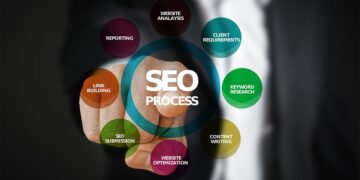Artificial intelligence (AI) tools have revolutionized the way businesses operate. From predictive analytics to automated customer service, AI has the potential to streamline processes, improve efficiency, and drive innovation. However, implementing AI tools is just the first step. To truly maximize the benefits of these tools, businesses must optimize them for their specific needs and goals. In this article, we will explore the best practices for AI tool optimization.
1. Define clear objectives: The first step in optimizing AI tools is to clearly define the objectives you want to achieve. By setting specific, measurable goals, you can align your AI tool optimization efforts with your business strategy and ensure that you are prioritizing the most important areas for improvement.
2. Choose the right AI tools: Not all AI tools are created equal. It is essential to carefully evaluate the available options and choose the tool or tools that best suit your objectives and requirements. Consider factors such as the tool’s capabilities, scalability, ease of integration, and cost.
3. Gather high-quality data: AI tools rely on data to make accurate predictions and informed decisions. To optimize your AI tools, you must ensure that you are working with high-quality, relevant data. Invest in data collection and cleaning processes to eliminate errors and biases that can impact the performance of your AI tools.
4. Train your AI models: Once you have gathered the necessary data, it is crucial to train your AI models effectively. This involves feeding the models with labeled data and fine-tuning them to improve their accuracy and performance. Regular retraining is also essential to keep the models up-to-date and responsive to changing conditions.
5. Monitor performance: Monitoring the performance of your AI tools is essential for identifying issues and opportunities for improvement. Set up regular performance metrics and benchmarks to track the effectiveness of your AI tools and make informed decisions about optimization strategies.
6. Collaborate with experts: AI tool optimization is a complex and specialized process. Collaborating with data scientists, AI experts, and other professionals can provide valuable insights and expertise to help you optimize your tools effectively. Consider outsourcing optimization tasks to specialists if you lack the necessary expertise in-house.
7. Automate workflows: AI tools are designed to automate repetitive tasks and streamline processes. By integrating AI tools into your workflows, you can optimize efficiency, reduce manual errors, and free up time for more strategic activities. Look for opportunities to automate tasks such as data processing, customer interactions, and decision-making to maximize the benefits of your AI tools.
8. Personalize user experiences: AI tools can help businesses deliver personalized experiences to their customers. By leveraging AI algorithms to analyze customer data and preferences, businesses can tailor their products and services to individual needs and preferences. Use AI tools to segment customers, create personalized recommendations, and optimize marketing campaigns for better engagement and conversion.
9. Implement ethical AI practices: As AI tools become more sophisticated, businesses must prioritize ethical considerations in their optimization efforts. Ensure that your AI tools are transparent, fair, and compliant with relevant regulations. Avoid using AI tools for discriminatory or unethical purposes and prioritize user privacy and data security in your optimization strategies.
10. Continuously iterate and improve: AI tool optimization is an ongoing process. To maximize the benefits of your AI tools, you must continuously iterate and improve them based on feedback, data analysis, and changing business needs. Stay agile and adaptable in your optimization efforts to ensure that your AI tools remain effective and relevant in a rapidly evolving landscape.
In conclusion, AI tool optimization is a critical step in maximizing the benefits of AI technology for businesses. By following these best practices, businesses can optimize their AI tools for efficiency, accuracy, and effectiveness, and drive better results across their operations. From defining clear objectives to collaborating with experts and implementing ethical practices, businesses can unlock the full potential of AI tools and stay ahead in today’s competitive landscape.













